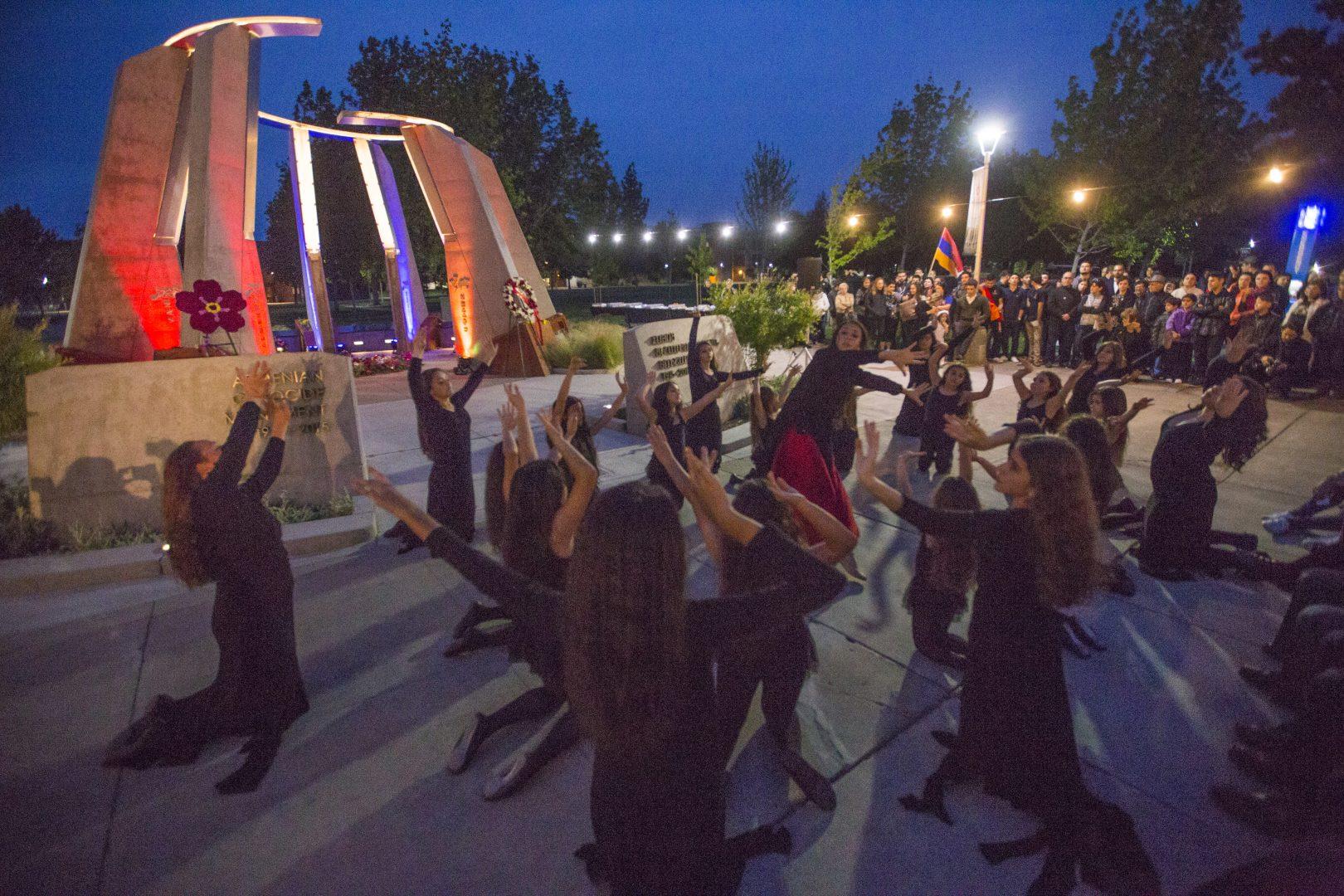About 100 people gathered around the Armenian Genocide Monument on Monday night for a ceremony commemorating the 102nd anniversary of the tragic occurrence.
Attendees made their way through the monument where they laid bouquets and wreaths of colorful flowers on the floor of the monument to pay tribute to the 1.5 million Armenians massacred over 100 years ago.
The commemoration began with a religious ceremony where listeners joined in prayer and heard from the Rev. Kevin Kasper, associate pastor of the Pilgrim Armenian Congregational Church in Fresno.
As dusk fell to night, the Armenian Genocide Monument glowed with orange, red and blue to represent the Armenian flag. Master of ceremonies, Dr. Barlow Der Mugrdechian, who is the coordinator for the Armenian Studies program, welcomed Fresno State President Dr. Joseph Castro to share a few words with the community.
“Fresno State pledges to keep the remembrance alive with this monument. It is a symbol of hope, education, memory and inspiration,” Castro said. “It demonstrates the university’s commitment to human rights and justice.”
The establishment of the monument two years ago was one of the most significant milestones in the 106-year history of the university, said Castro.
“We, of course, are an educational institution, and education is at the core of the Armenian Genocide Monument,” Castro said. “This monument informs people of Armenian history and brings awareness to the tragic events of the 20th century. I urge all of us in our community to become aware of the history of Armenia and the genocide. We will never forget.”
Castro also commemorated the 40th anniversary of the Fresno State Armenian Studies Program. Since its founding in 1977 the program’s courses have reached approximately 12,000 students and has graduated about 131 students with minors in Armenian studies.
Following Castro’s address, Fresno Mayor Lee Brand spoke.
Brand recalled his time growing up and learning about the genocide. Above all, the mayor stressed the importance of remembering the history of the genocide.
“Make sure the eternal light stays lit,” Brand said. “Remember the [villages] that were wiped off the face of the map; remember the death marches across the Syrian Desert to come to concentration camps. Remember the many executions and massacres and never ever forget the men and women and children who perished in this terrible genocide, whose dreams were never fulfilled so many years ago.”
For student Michael Rettig, a second-year graduate student in the history department and member of the Armenian Students Organization, the monument and the commemoration ceremony served as a great reminder for those not informed on the genocide.
“I think just in general with everything that’s happening right now, with the commemoration there was a lot celebrities talking about it and with the movie that just came out, ‘The Promise,’ this weekend, it’s in discussion more,” Rettig said.
Rettig said it made him feel very proud that there is an entire monument dedicated to remembering the tragedy faced 102 years ago.
“My grandparents, my great-grandparents all have their stories,” Rettig said. “Just to know that students pass it every day, and they’re able to learn about the genocide. The monument is going to be here for decades and decades, and they will be able to learn about our families.”
Kara Statler, a sophomore theater major and also with the Armenian Students Organization, attended the ceremony and said the most important way to keep the memory of the genocide alive is continued awareness.
“I think it’s just about keeping aware. Because our families and the people that we know have experienced something like this, we’re more inclined to stay informed,” Statler said. “We, at least the people I know, try very hard to keep in touch with things that are going on.”
Rettig said that continued awareness of world events helps keep people informed.
“As Armenians, our ancestors have been through it,” Rettig said. “We’re kind of more sensitive when it happens in other places in the world, such as the Yazidis massacres a couple years ago in Syria. It’s reminiscent to the Armenian experience.”




